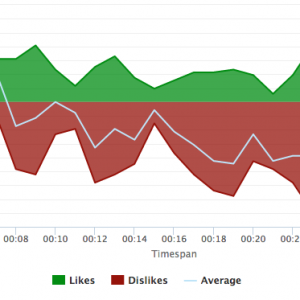Understanding the Benefits of Marketing Concept Testing

In today’s competitive business environment, companies are consistently seeking an edge in their marketing efforts to gain market share and increase profits. One effective method of achieving this goal is through marketing concept testing, which allows businesses to test new ideas and evaluate the effectiveness of their marketing strategies before launching to the market. This article will explore the importance of concept testing in marketing, key elements of the process, and real-world examples of successful concept testing.
The Importance of Concept Testing in Marketing Strategy
Concept testing is a crucial step in the marketing strategy of any business. It involves evaluating a product or service before it is launched in the market to determine its viability and potential success. By conducting concept testing, companies can gain valuable insights into their target audience’s needs and preferences, refine their marketing messages, and reduce risks and costs associated with product failure.
Identifying Target Markets
The initial step in concept testing is identifying the target markets. This involves understanding the demographics, psychographics, and behavior of potential customers. By understanding who the target audience is and what their needs are, companies can better tailor their marketing messages to appeal to these individuals. This allows companies to create products and marketing campaigns that resonate with their target audience, increasing the probability of success in the marketplace.
For example, if a company is launching a new line of beauty products, they may conduct concept testing to identify their target audience, which could be women between the ages of 18-35 who are interested in natural and organic products. By understanding their target audience’s needs and preferences, the company can create products and marketing messages that appeal to this specific group of individuals.
Refining Marketing Messages
Concept testing also allows businesses to refine their marketing messages to better align with their target audience’s needs. This process involves obtaining feedback from potential customers regarding their thoughts and opinions on a particular product or service. By listening to the customer’s feedback, businesses can modify their marketing messages to improve the product’s chances of success when it enters the marketplace.
For instance, if a company is launching a new line of fitness equipment, they may conduct concept testing to obtain feedback from potential customers on the product’s design, features, and benefits. Based on this feedback, the company can modify its marketing messages to highlight the product’s unique features and benefits that appeal to its target audience, such as ease of use, durability, and affordability.
Reducing Risks and Costs
Perhaps most importantly, concept testing helps companies reduce risks and costs associated with product failure. By conducting market research and testing product concepts before launch, businesses can identify potential issues and make adjustments to mitigate these risks. Identifying and addressing these issues early on can save significant costs in the long run and help ensure the product’s success.
For example, if a company is launching a new line of food products, they may conduct concept testing to identify potential issues with the product’s taste, packaging, or pricing. Based on the feedback received, the company can make necessary adjustments to the product, such as changing the recipe or adjusting the packaging to make it more appealing to their target audience. By doing so, the company can reduce the risk of product failure and save costs associated with having to re-launch the product.
In conclusion, concept testing is a critical step in the marketing strategy of any business. By identifying target markets, refining marketing messages, and reducing risks and costs associated with product failure, businesses can increase their chances of success in the marketplace and build a loyal customer base.
Key Elements of Marketing Concept Testing
Marketing concept testing is a crucial step in the product development process for businesses. It involves gathering feedback from potential customers to determine whether a particular product or marketing message will resonate with them. There are several key elements of marketing concept testing that businesses should keep in mind to ensure the success of their products.
Qualitative Research Methods
One key element of marketing concept testing involves using qualitative research methods. This type of research is often exploratory and focused on gaining a deeper understanding of customer needs and preferences. Qualitative research methods include techniques such as focus groups, one-on-one interviews, and observation. By using these methods, companies can obtain detailed feedback from customers, allowing them to refine their marketing messages and product concepts.
For example, a company developing a new line of organic skincare products may conduct focus groups to gain a better understanding of what types of ingredients potential customers are looking for in their skincare products. They may also conduct one-on-one interviews to gain a deeper understanding of the specific skincare concerns of their target demographic.
Quantitative Research Methods
Another important element of concept testing is quantitative research methods. Quantitative research involves collecting and analyzing numerical data, typically using surveys or statistical analysis. This type of research provides a more objective view of customer preferences and allows businesses to make data-driven decisions regarding their marketing messages and product concepts.
For example, a company may conduct a survey to determine how likely potential customers are to purchase a new product based on different marketing messages. They may also use statistical analysis to determine which product features are most important to their target demographic.
Analyzing and Interpreting Data
Concept testing also involves analyzing and interpreting data obtained from market research. This step involves looking for patterns or commonalities in the data and identifying potential issues or opportunities. By carefully analyzing the data, businesses can make informed decisions regarding their marketing strategy and product concepts.
For example, a company may analyze the data obtained from focus groups and surveys to identify common themes or concerns among potential customers. They may also identify opportunities to differentiate their product from competitors based on customer feedback.
In conclusion, marketing concept testing is a crucial step in the product development process for businesses. By using a combination of qualitative and quantitative research methods and carefully analyzing the data obtained, businesses can make informed decisions regarding their marketing strategy and product concepts, ultimately leading to greater success in the marketplace.
The Concept Testing Process
Companies such as Spot Trender use concept testing as a vital process for businesses that want to develop successful products. It is a way to test new ideas, products, or services before they are launched in the market. Concept testing can help businesses identify potential issues, improve product chances of success, and gain insights into customer needs and preferences. In this article, we will discuss the four steps involved in the concept testing process.
Defining Objectives and Goals
The first step in the concept testing process is to define the objectives and goals of the test. This involves identifying what the business hopes to achieve through the testing process. Defining clear objectives and goals will help businesses stay focused and ensure that they are making data-driven decisions. It is essential to identify the target audience, product features, and other factors that will be tested during the process.
For instance, if a company is developing a new product, they may want to test its features, design, and packaging. Defining clear objectives and goals will help businesses stay focused and ensure that they are making data-driven decisions.
Selecting the Appropriate Test Method
Once the objectives and goals are defined, companies must select the appropriate test method. This may involve using qualitative research methods such as focus groups, quantitative research methods such as surveys, or a combination of both. The choice of the test method will depend on the company’s goals, budget, and other factors.
For instance, if a company wants to test a new product’s features and design, they may use a focus group to get feedback from potential customers. On the other hand, if they want to test the product’s market potential, they may use a survey to get a larger sample size.
Implementing the Test
After selecting the appropriate test method, the company can implement the test. This involves recruiting participants, conducting the test, and collecting and analyzing data. It is essential to ensure that the test is conducted in a way that accurately reflects the target market’s behavior and preferences.
For instance, if a company is testing a new product’s design, they may recruit participants who match the target audience’s demographics. They may also conduct the test in a setting that resembles the product’s intended environment.
Evaluating Results and Making Adjustments
Finally, companies must evaluate the results of the test and make adjustments as necessary. This may involve modifying the product’s design or marketing messages, refining the target audience, or making other changes based on the data obtained from the test. By making data-driven decisions, companies can increase their chances of success in the marketplace.
For instance, if a company finds that the product’s design is not appealing to the target audience, they may modify it to make it more attractive. If they find that the marketing messages are not resonating with the target audience, they may refine them to make them more effective.
In conclusion, the concept testing process is an essential step in developing successful products. By defining clear objectives and goals, selecting the appropriate test method, implementing the test, and evaluating the results, businesses can make data-driven decisions that increase their chances of success in the marketplace.
Real-World Examples of Successful Concept Testing
Case Study 1: Product Launch Success
In one successful concept testing case, a startup company sought to launch a new type of health supplement. Through concept testing, they were able to identify the target market and create marketing messages that resonated with this audience. The product launch was a success, and the company quickly gained market share.
Case Study 2: Rebranding and Repositioning
Another successful concept testing case involved a struggling electronics retailer who sought to rebrand and reposition themselves in the market. Through market research and concept testing, they were able to identify new target markets and create marketing messages that resonated with these audiences. The resulting rebranding and repositioning efforts were successful, and the company saw significant growth in sales and profitability.
Case Study 3: Expanding into New Markets
In a final case, a well-established restaurant chain sought to expand into new markets. Through market research and concept testing, they identified potential issues with their menu and made adjustments to better appeal to the new target audience. These efforts were successful, and the restaurant chain saw significant growth in sales and profitability in the new markets.
Conclusion
Concept testing is a crucial component of successful marketing strategy, allowing businesses to test ideas, refine marketing messages, and mitigate risks associated with product failure. By carefully selecting the appropriate test method, implementing the test, and analyzing the results, companies can make data-driven decisions that increase their chances of success in the marketplace.







